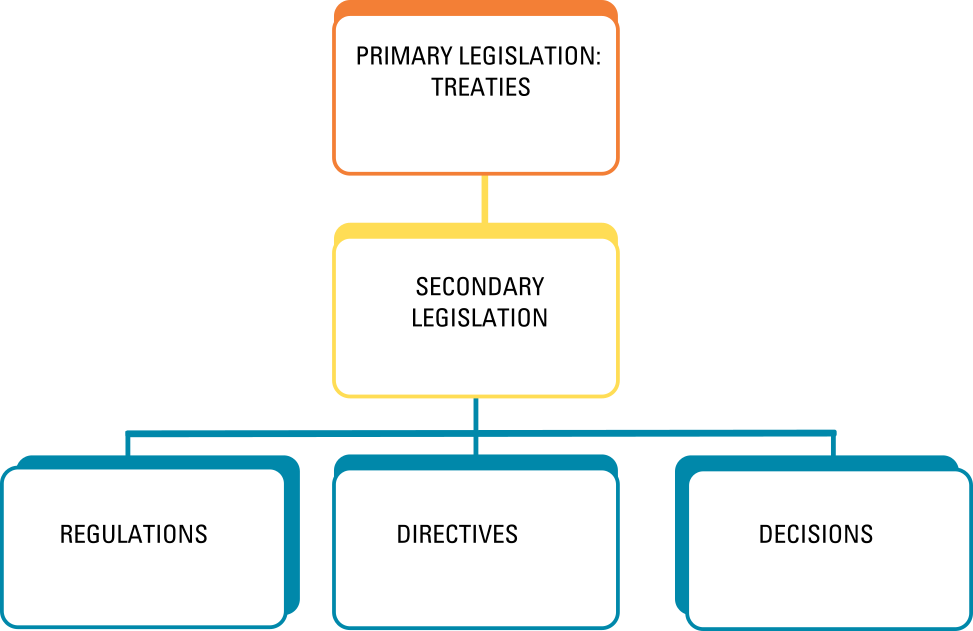European institutions and the EU anti-discrimination policy
4. European Legislation
The complex legal structure of the European Union has evolved over time. It is worth summing up its trajectory and the repercussions it has had on the development of anti-discrimination laws (source FRA 2018).

European Union law is part of the legal system of each Member State. It is divided into primary law and secondary law. Primary law establishes the division of competences between the European Union and the member states and defines the legal framework within which the EU institutions implement policies.
Secondary law includes:
regulations: of general application, binding in all their elements and directly applicable in all European Union countries, without the need for transposition into national law. They must be fully respected by the recipients: individuals, member states, and Union institutions;
directives: they bind the member states with regard to a common objective to be achieved, while leaving the national authorities with the power to decide on the form and means by which to achieve the objectives set. The directive must be implemented by the member state through a specific law that adapts the national legislation to the objectives indicated;
decisions: they are binding in all elements but only towards the recipients, for example a member country, individuals, a company, etc.
In addition to these binding legal acts, there are also non-binding legal acts or recommendations and opinions (Article 288 of the TFEU).
The jurisprudence of the Court of Justice of the European Union (CJEU) also constitutes a source of Community law.